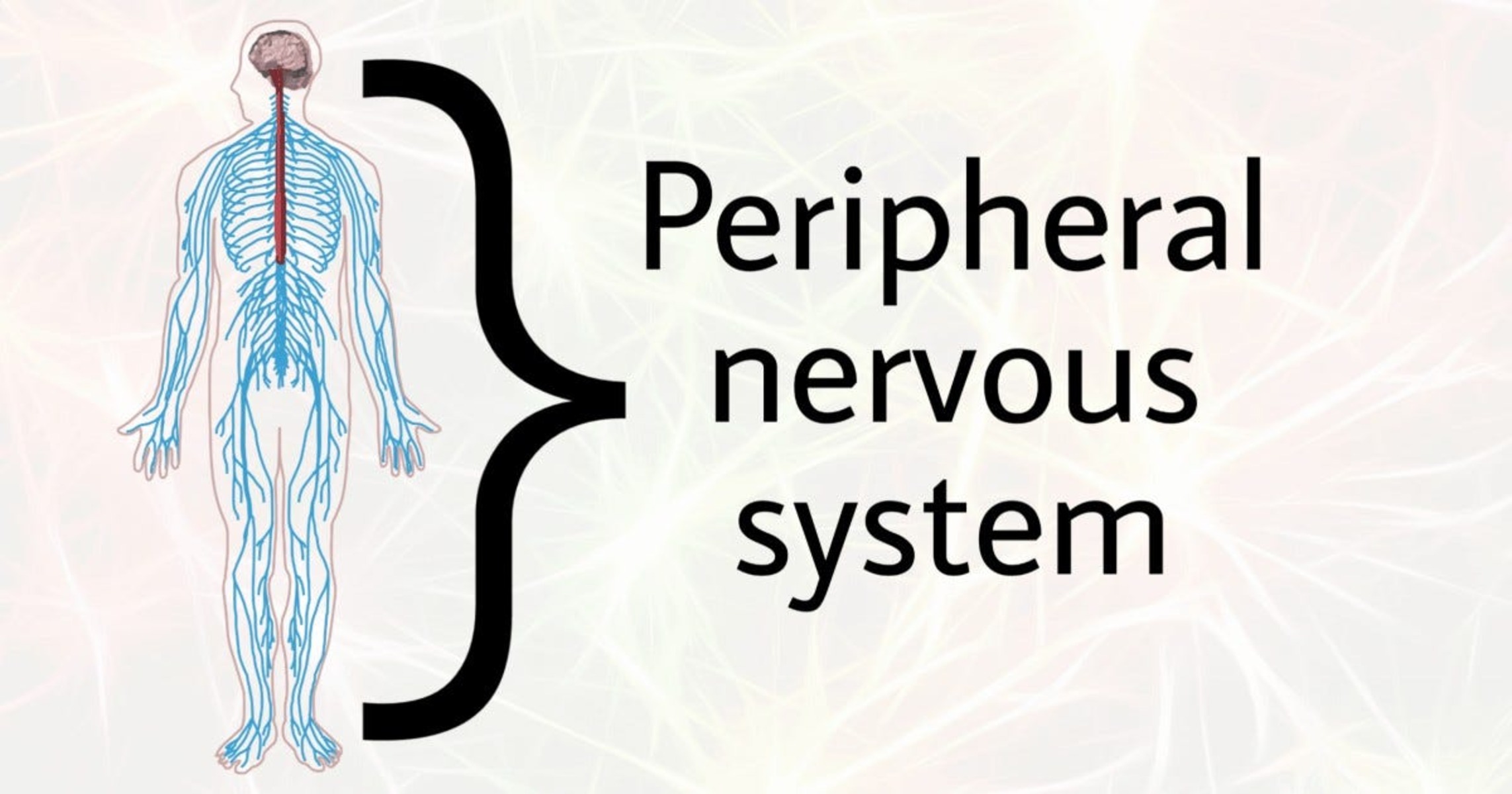
The peripheral nervous system (PNS) is a fascinating and complex network of nerves that extends throughout the body, connecting the central nervous system (CNS) to various organs, muscles, and tissues. It plays a crucial role in transmitting signals from the brain and spinal cord to the rest of the body, allowing for communication and control over bodily functions.
In this article, we will delve into the peripheral nervous system and explore 19 mind-blowing facts that will not only expand your knowledge but also leave you in awe of the remarkable capabilities of this intricate system. From its structure and function to its incredible regenerative abilities, we will uncover the hidden wonders of the PNS that are often overshadowed by its counterpart, the central nervous system. So, grab a seat and get ready to be amazed by these eye-opening facts about the peripheral nervous system!
Key Takeaways:
- The peripheral nervous system controls our sense of touch, muscle movements, and even the pleasure we experience, making it essential for our everyday existence and quality of life.
- With over 100 billion neurons, the peripheral nervous system connects the brain to the rest of the body, allowing us to see, hear, and respond to our surroundings. It’s truly mind-blowing!
The PNS consists of two main components.
The peripheral nervous system is divided into the somatic nervous system (SNS) and the autonomic nervous system (ANS). The SNS controls voluntary movements and allows us to consciously perceive sensations. On the other hand, the ANS regulates involuntary processes like heart rate, digestion, and breathing.
There are over 100 billion neurons in the PNS.
Neurons are the building blocks of the nervous system. In the peripheral nervous system alone, there are an estimated 100 billion neurons, each with its own capability to transmit electrical signals.
The PNS is responsible for transmitting pain signals.
When we experience pain, it is the peripheral nervous system that carries the signals from the site of injury or damage to the brain, alerting us to potential harm.
The PNS controls our sense of touch.
Whether it’s the feeling of a soft breeze or the sensation of a warm hug, the peripheral nervous system is responsible for relaying tactile information to the brain, allowing us to perceive touch.
The PNS enables us to smell and taste.
The peripheral nervous system includes the cranial nerves, which are essential for our ability to smell and taste. These nerves transmit signals from our olfactory and taste receptors to the brain, allowing us to enjoy the flavors and fragrances around us.
The PNS controls our muscle movements.
From simple actions like blinking and smiling to complex movements like dancing or playing a musical instrument, the peripheral nervous system coordinates and controls all our muscle movements.
It helps regulate our body temperature.
The peripheral nervous system works in conjunction with the autonomic nervous system to help regulate body temperature. When we are cold, the PNS activates shivering to generate heat, while in hot temperatures, it triggers sweating to cool down the body.
The PNS aids in digestion.
Various components of the peripheral nervous system play a role in digestion. The ANS controls the movement of food through the digestive tract and regulates the secretion of digestive enzymes.
It facilitates the release of adrenaline.
In moments of stress or danger, the peripheral nervous system triggers the adrenal glands to release adrenaline, preparing us for a fight-or-flight response.
The PNS allows us to see.
While vision is largely attributed to the optic nerves and the visual cortex in the brain, the peripheral nervous system plays a vital role in transmitting visual information from the eyes to the brain.
It helps us maintain balance and coordination.
Through the collaboration between the peripheral nervous system and the brain, we are able to maintain our balance, stay upright, and perform coordinated movements.
The PNS plays a role in sexual arousal.
The peripheral nervous system is involved in sexual arousal and the physiological responses that accompany it. It facilitates the release of hormones and the activation of the reproductive organs.
It allows us to hear.
While our ears and the auditory system are responsible for capturing sounds, it is the peripheral nervous system that relays the auditory signals to the brain for interpretation.
The PNS can repair itself.
Unlike the central nervous system, the peripheral nervous system has the ability to regenerate and repair damaged nerves, to some extent, enabling functional recovery after injuries.
It helps us experience pleasure.
The peripheral nervous system plays a role in transmitting sensations of pleasure, such as the feeling of a gentle touch or the enjoyment of a delicious meal.
The PNS can be affected by autoimmune disorders.
Certain autoimmune disorders, such as Guillain-Barré syndrome, can target the peripheral nervous system, leading to weakness, numbness, and tingling in the extremities.
It connects the brain to the rest of the body.
The peripheral nervous system serves as the communication network between the brain and the rest of the body, allowing for the exchange of information and the coordination of various bodily functions.
The PNS is constantly receiving sensory input.
Whether it’s feeling the texture of a surface or sensing changes in temperature, the peripheral nervous system is constantly receiving sensory input from our surroundings.
It is vital for our survival and quality of life.
Without the peripheral nervous system, we would not be able to perceive the world around us, control our movements, or experience the sensations that make life so rich and meaningful.
The peripheral nervous system is a fascinating and awe-inspiring part of our anatomy. Its intricate network of nerves and functions make it a critical component of our everyday existence. From our sense of touch to our ability to move and perceive the world, the peripheral nervous system plays an indispensable role in our survival and quality of life. So the next time you enjoy a delicious meal, feel the warmth of the sun on your skin, or dance to the rhythm of your favorite song, remember to thank your remarkable peripheral nervous system.
Conclusion
In conclusion, the peripheral nervous system is a remarkable component of the human body. It plays a crucial role in transmitting signals between the central nervous system and the rest of the body. The 19 mind-blowing facts we’ve explored highlight the complexity and incredible capabilities of this system.
From the intricate network of nerves that span across our bodies to the specialized sensory receptors that allow us to experience the world around us, the peripheral nervous system is an integral part of our daily lives. Understanding its functions and properties can provide us with a deeper appreciation for the intricate workings of the human body.
By delving into these fascinating facts, we gain insights into the amazing ways our bodies are wired and how they respond to different stimuli. The peripheral nervous system exemplifies the wonder of biology and serves as a reminder of the marvels that exist within us.
FAQs
1. What is the peripheral nervous system?
The peripheral nervous system is the part of the nervous system that connects the central nervous system to the rest of the body. It consists of all the nerves and ganglia outside of the brain and spinal cord.
2. How does the peripheral nervous system function?
The peripheral nervous system functions by transmitting signals between the central nervous system and different parts of the body. It allows for the relay of sensory information from the body to the brain and enables motor responses to be sent from the brain to the muscles and organs.
3. What are the main components of the peripheral nervous system?
The main components of the peripheral nervous system are the sensory neurons, motor neurons, and the autonomic nervous system. Sensory neurons transmit sensory information to the brain, motor neurons control muscle movements, and the autonomic nervous system regulates involuntary bodily functions.
4. How many pairs of cranial nerves are there in the peripheral nervous system?
There are 12 pairs of cranial nerves in the peripheral nervous system. These nerves are responsible for controlling various functions, including sensory and motor functions of the head, face, and neck.
5. Can peripheral nerves regenerate if damaged?
Peripheral nerves have the ability to regenerate to some extent if they are damaged. This regrowth process can be slow and varies depending on the severity of the injury.
The peripheral nervous system's incredible complexity enables us to experience life's joys and challenges. From sensing touch to regulating digestion, this intricate network plays a vital role in our daily existence. Understanding PNS empowers us to appreciate our bodies' remarkable capabilities. If you found these facts captivating, continue exploring the nervous system's wonders by learning about the central nervous system's equally impressive feats. Delving deeper into neuroscience will reveal even more astonishing truths about the human body's most complex and essential systems. Stay curious, and never stop marveling at the extraordinary machine that is you.
Was this page helpful?
Our commitment to delivering trustworthy and engaging content is at the heart of what we do. Each fact on our site is contributed by real users like you, bringing a wealth of diverse insights and information. To ensure the highest standards of accuracy and reliability, our dedicated editors meticulously review each submission. This process guarantees that the facts we share are not only fascinating but also credible. Trust in our commitment to quality and authenticity as you explore and learn with us.


